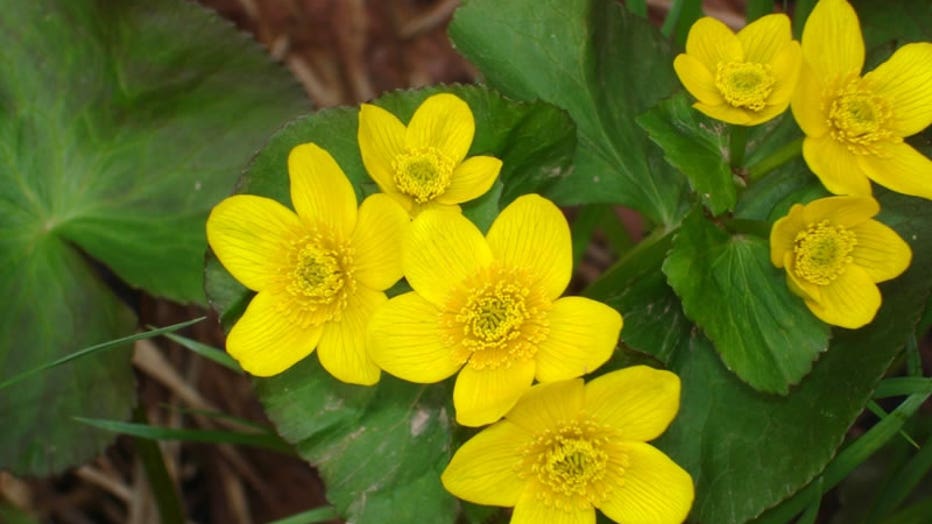Lesser Celandine, an invasive menace, is spreading in Michigan, officials say
Ranunculus Ficaria. Favagellolesser Celandine. (Photo by: Paroli Galperti/REDA/Universal Images Group via Getty Images)
(FOX 2) - It goes by multiple names, from Fig buttercup to pilewort. To the Midwest Invasive Species Information Network and the monitors in Michigan, it's called lesser celandine.
This perennial plant that sprouts a pretty yellow flower is the latest cause for concern to Michigan's environment and regulators are hoping to slow its spread around the state.
Big picture view:
State officials are asking residents to be on the lookout for lesser celandine, an invasive plant that disappears as soon as it blooms.
And after it's done growing for the season, the nonnative species leaves little room for other plants to grow while wrecking erosion controls along the shores where it tends to live.
It's also capable of injecting chemicals into the soil, making it harder for native plants to grow.
"If it's kind of poisoning the well against everybody else, that can make it a lot harder for our native plants to thrive," said Katie Grzesiak, a terrestrial invasive species coordinator.
Grzesiak works at the Michigan Department of Natural Resources. She outlined all the problems that lesser celandine brings once it is established during a virtual presentation.
Identifying Lesser Celandine
The backstory:
Lesser celandine was added to Michigan's invasive species watchlist in 2024 amid reports of it spreading in mid-Michigan floodplains.
While it was identified along the Grand River watershed, it's since been confirmed in Southeast Michigan and on the west side of the state. There are also two confirmed cases in the Upper Peninsula.
Officials believe it was brought to the U.S. as a garden plant or through contaminated soil and ballast water from Europe.
Featuring waxy leaves that are heart-shaped, the plant stays low to the ground and sprouts yellow flowers with seven to 11 petals. It forms what Grzesiak described as a "carpet" on the forest floor.
The plant prefers moist environments in forests and along rivers, which can help it grow as well as spread its seeds.
Dig deeper:
Lesser celandine is difficult to manage because its annual lifespan is short.
It goes up in late March/early April before becoming dormant by May. Usually by Memorial Day, it's gone. That limits the window that species managers have to locate, verify, and remove the plant.
Like other invasive species, it has different ways of spreading - either with tubers in its roots, bulbil that sprout where the leaves sprout, or with seeds.
It's also similar to other problem plants by outcompeting native vegetation that also bloom in the spring, while stripping river banks of erosion controls by preventing other plants from growing there.
Grzesiak said lesser celandine may also be allelopathic, meaning it can release chemicals into the ground that influences the growth of other plants. In the case of this invasive species, those chemicals are toxic to other plants.
What you can do:
Removing the plant first requires where it's growing.
That's where the public comes in. If anyone identifies the plant, they're asked to report it to the Michigan DNR or the Midwest's invasive species network at MISIN.msu.edu.
A free app is available for download where people can snap a photo and send it directly to officials.
Because lesser celandine looks like other spring ephemerals, residents should ensure they aren't mistaking the plant for something else.
Lookalikes include: Marsh marigold, celandine poppy, greater celandine, dandelions, winter aconite, creeping charlie or ground ivy.

Marsh Marigold, a lookalike of lesser celandine but native to Michigan. (Photo via U.S. Forest Service)
The Source: DNR presentation on invasive species


